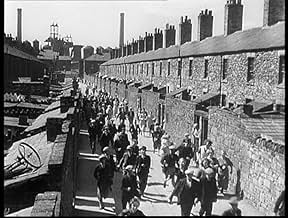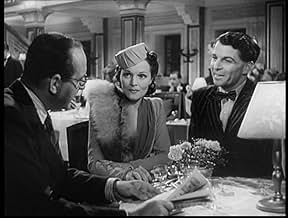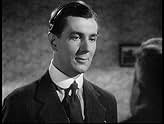In a small coal-mining village, Bob Fenwick leads a strike over safety standards at the local colliery. Meanwhile, his son David goes off to university with the hope one day to return to hel... Read allIn a small coal-mining village, Bob Fenwick leads a strike over safety standards at the local colliery. Meanwhile, his son David goes off to university with the hope one day to return to help the miners with their working conditions.In a small coal-mining village, Bob Fenwick leads a strike over safety standards at the local colliery. Meanwhile, his son David goes off to university with the hope one day to return to help the miners with their working conditions.
- Awards
- 1 win total
- Slogger Gowlan
- (as George Carnay)
Featured reviews
This film was a breakout success for Carol Reed who up to that time had been limited to what we call B picture features and what over the other side of the pond call quota quickies. It was produced by an independent studio called Grafton films and released here by the short lived Grand National Studios. Reed was contracted to Gainsborough Pictures and he was able to get fellow contractees Michael Redgrave, Margaret Lockwood, and Emlyn Williams for this production.
I don't think that Michael Redgrave was ever more idealistic on the screen than he was in The Stars Look Down. He plays a working class stiff who earns a scholarship to the university and he intends to use that education for the benefit of the miner class from where he comes. But this idealist is very human and he makes the wrong choice in a life partner in the form of pretty, but shallow Margaret Lockwood who sees him as a meal ticket to get ahead herself.
The guy who Lockwood was going with is Emlyn Williams who would be called a cad and a bounder over there. He's also a miner's kid, but his method of escape isn't exactly condoned in polite society, he becomes a bookmaker. Eventually he joins with management. One great thing about The Stars Look Down is we see where all these three characters came from and the values imparted to them.
Redgrave has two marvelous scenes that really stand out. The first is when he's in class and making an eloquent case in class for the government ownership of the coal mines. The second is before the Board of Trade arguing that the mine his father and others in his district is not safe because where they want to mine is holding back the sea itself. His own personal problems prevent the Board from listening to him. In both Redgrave personifies youthful idealism and impatience. In the end it's shown he has good reason to be impatient.
The film was shot on location at an actual colliery in Cumberland and the scenes depicting the mine disaster which is the climax of the film are frighteningly real and hold up well today. The film stands comparison to How Green Was My Valley which was a film on the same subject, but done in the poetical style of John Ford and done over here.
The Stars Look Down will still move the viewers and the problems of industrial safety are just as real today as they were when The Stars Look Down came out.
It is a political drama about the struggle to control the means of production - no, really. Michael Redgrave and Emlyn Williams play two young men from a dour north-east mining town who escape, separately, to the bright lights of Newcastle. Redgrave's character is a scholarship kid at the university, while Williams plays a spiv who starts out working as a bookie but soon finds other dubious business interests.
They return home for different reasons, and clash over the future of the mine, which the workers suspect is unsafe. It's a surprisingly anti-establishment film for 1940, when Britain was deep into the Second World War, especially given Churchill's famously harsh treatment of striking miners in the 1920s.
Once you get past the useless introductory speech, this movie begins quite well, portraying a grim world and immediately giving one a feel for the plight of the miners.
For me, a difficulty came with the introduction of Margaret Lockwood's character. I admit there are selfish, empty headed people in the world, but they make for poor film characters. Fortunately it's a fairly small role, but it felt unnecessary to have her at all. She represents a melodramatic streak that unfortunately runs through the movie and lessens the overall impact.
While some parts were problematic, other parts are terrific, such as the mother's stoic attitude as her son goes off to college in which you see her feelings only when no one is looking. And the inevitable disaster is impressively handled.
I also didn't find Michael Redgrave complete believable. I'm not convinced he could develop such an upperclass accent no matter how hard he studied at the local schools.
While worth seeing, this could have been a better movie with a little less melodrama.
Did you know
- TriviaSir Carol Reed disowned this movie, calling it "a gloomy little piece". He expected it to be a box-office disaster and was highly surprised when wartime audiences warmed enthusiastically to it.
- Quotes
[first lines]
Richard Barras: Well, Fenwick, will the men work tomorrow?
Robert Fenwick: Not if its to be in Scupper Flats, Mr. Barras.
[indicating a well-dressed union official]
Richard Barras: Even against your union?
Robert Fenwick: The union isn't being asked to work in Scupper Flats. On the other side of that coal seam is a million tons of flood water ready to rush right down on top of us.
Richard Barras: You don't think I'd take a chance in floodin' me own mine, do you, Fenwick?
Robert Fenwick: Well, show us the plans of them old workings, then!
- Alternate versionsThe U.S. release included additional narration spoken by an uncredited Lionel Barrymore.
- ConnectionsFeatured in The Love Goddesses (1965)
- How long is The Stars Look Down?Powered by Alexa
Details
- Release date
- Country of origin
- Language
- Also known as
- Zvezde gledaju sa neba
- Filming locations
- Cumbria, England, UK(Exterior)
- Production company
- See more company credits at IMDbPro
- Runtime
- 1h 50m(110 min)
- Color
- Aspect ratio
- 1.37 : 1
























